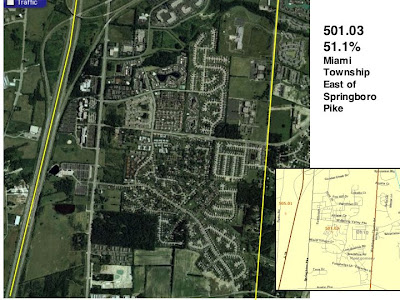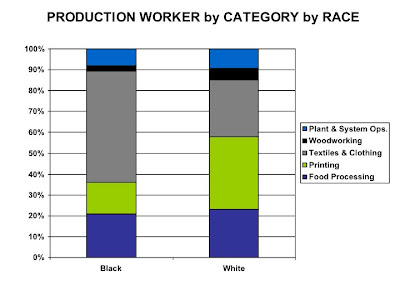 Yer humble host could spend all week blogging about this book. It’s really juicy.
Yer humble host could spend all week blogging about this book. It’s really juicy.It was written by a journalist, not an academic, so it reads fast and isn’t dry, as academic books can sometimes be.
What’s it about? A cold hard look at the decline of the Midwest. No happy talk or sunny scenarios here. Just a reality check on how economic forces, mostly globalization, but also earlier economic challenges like Japanese imports and work moving South, are changing the region. And how Midwestern values & attitudes don’t help much.
The author is a native Iowan, and he used to be a foreign correspondent for the Chicago Tribune. So Iowa places are frequently featured as examples and case studies. Chicago is also featured as a Midwest place that has found a role as a node in the global economy, as a second tier world city. Other places are also featured, like Beardstown, Illinois (for the impact of Mexicans working in meatpacking), and Grand Rapids and Peoria as smaller cities that are finding a niche in the global economy. Most major Midwest cities get a mention.
A strength of the book is the focus on the rural, small town, and small city Midwest, places like Warsaw, Muncie, and Anderson, Indiana (all discussed in the book). Some of this is probably old news (decline of rural America, factories closed due to foreign competition), some is new, like Peoria as a positive case study for a response to globalization.
There are interesting insights on education, particularly higher education, on how the big land grant universities are becoming disconnected from their states due to funding cuts.. The author suggests that it might be better for these universities to become primarily graduate level schools and research institutions, networking & collaborating with each other, funded by corporate and nonprofit grants, corporate research partnerships, and tuition.
State and local government is castigated as fragmented, parochial, antiquated, and irrelevant. The author calls for a true regional approach to economics and education, suggesting in-state tuition to any Midwest university for Midwestern students. The idea is not outlandish as there has been a form of this in the South for decades. An example is the agreement between Kentucky and West Virginia, where students from WVA can go to college at U of K paying in-state tuition if WVU doesn’t offer the program.
The author also makes the point that Midwesterners don’t value education, particularly college, and this is a historic shift.
I agree with this as I can offer anecdotes from co-workers who don’t really care if their kids go to college, that if they want to go its up to the kid to pay for it (from people who could easily help out with their kids tuition). I recall similar attitudes from people I went to high school with in Louisville.
What’s new news is that it’s white Midwesterners who hold this attitude the most. People stereotype black folk as ghetto, but the author cites a Michigan study showing that more blacks think a college education is essential to get ahead than whites.
Yet the author writes about the blacks, a lot of them, as excluded from the economy. The author writes about the black underclass as “America’s single insoluble social failure."
The black underclass will have company. Although he doesn’t say it the economic trends and attitudes Longworth discusses will lead to a Latino (where there are a lot, not Dayton) and white underclass, too. We are seeing that with whites in Dayton.
The book has received some reviews. One, from the Chicago Reader Hot Type column , has a discussion about Longworths call for a regional news source, either a newspaper or website, but touches on other aspects of the book (article based on e-mails between the Reader columnist and Longworth). Dayton gets a mention here
The Rust Belt Reader
Unfortunately, even papers that do try to tell this story find their readers in denial. “Every once in a while a paper will rear back and really try to do a job—a big series on economic changes,” Longworth told me. In the last few years, “the Cleveland Plain Dealer did this, with a long series called ‘The Quiet Crisis.’ . . . An editor at the paper told me the series was generally well received, ‘but the two pieces specifically on globalization and immigration landed with a dull thud.’ The Dayton Daily News did a good series, which most of the local leaders seem to have put down as useless negativism. This is a town that has already lost more than half its population.”
As befits a book by a journalist there is discussion of Midwestern journalism, including points about excessive local news that would be familiar to DDN critics.
Another article, from the Seattle Post-Intelligencer, uses one of the mentions of Dayton as a warning to the Pacific Northwest about economic complacency:
Longworth cites the example of just one Midwestern city: Dayton, Ohio, home of the Wright Brothers, holder of more patents per capita than any other American city, the birthplace of cash registers, microfiche, bar codes, the parking meter, the movie projector, the parachute, the gas mask, the pop-top can and the stepladder.
So what happened? "In many ways, the Midwest is the victim of its own success," Longworth writes. "These were company towns, totally dependent on one big corporation. Their founders had one really good idea, and that idea sustained their corporations for decades, eliminating the need for more good ideas." The lack of good ideas and the inability to generate them left the region unprepared to deal with the accumulating blows of manufacturing moving to the Sun Belt, competition from imports and then globalism.
Dayton did innovate a lot, but that was two or three generations ago. Is Longworth not correct in his diagnosis why innovation has declined, and what innovation there was failed to translate into economic growth?
Closing on a slightly more optimistic note, the author does say Daytonians are “asking the right questions”:
“Dayton, at least, understands what is happening to it, and why. It grasps the industrial era is gone and globalization is here...
....Most of the rest of Ohio, which looks down it’s nose at Dayton, doesn’t think the city has a chance. Ned Hill, the state’s leading urban economist, calls Dayton a “hospice for Delphi”, scoffs that the air bases’ only mission is to “blow things up”, and argues that “it’s not research that drives economies,-it’s products.” Perhaps he’s right. Dayton isn’t there yet. It isn’t even close to there. But the tired old city, against the odds, is taking three venerable institutions, auto parts,-financial data, and the air force base, and seeing if they add up to a fingerhold on the global future."
A ray of hope. Yet, finally, the book reminded me of that gloomy Over The Rhine song lyric
I know Ohio
Like the back of my hand
Alone Ohio
Where the river bends
And it's strange to see your story end
How I hate to see your story end
It's so sad to see your story end
















































